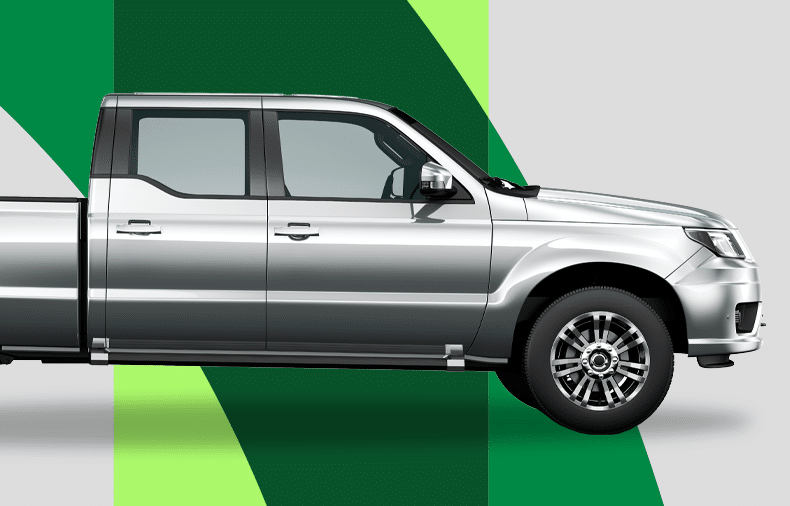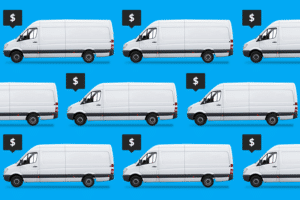You finally found your dream classic car online — a cherry red 1965 Mustang convertible just begging for a road trip. But transporting your shiny new cruiser hundreds of miles home could cost nearly as much as the car. Before you scrap your plans, take a breath. There are good ways to ship vehicles and avoid budget-busting quotes.
The key is to understand what drives the big numbers. Mainly, it comes down to the following:
- Distance: The more miles a trucker travels with your car, the higher the price tag from extra gas and time.
- Size: Large or bulky vehicles take up more trailer space, which limits the number of other cars that can be loaded for shared costs.
- Weight: Heavy cars reduce fuel mileage compared to lighter models, raising the driver’s expenses.
With the correct information upfront on mileage to your destination, vehicle dimensions, and weight, transporters can offer fair quotes matched to hauling your exact cargo. In this article, we’ll share how length, width, and height factor into shipping rates, as well as the average cost comparisons by vehicle type.
The goal is to become a savvy shopper so you can relax on that Mustang’s maiden voyage knowing the transport math added up!
Let’s cruise through what revs up the cost to ship a vehicle when relocating your wheels.
THE IMPORTANCE OF DISTANCE IN VEHICLE SHIPPING COSTS

Transport distance is the primary factor in over-the-road vehicle shipping costs. The further a carrier must haul your vehicle, the higher the rate to account for extended mileage and driver time. Key influences include:
- Fuel Costs: Additional miles mean increased diesel and gas consumption carrying your payload. With carriers paying around $5–$7 per gallon, a cross-country trip could use 100+ gallons roundtrip.
- Time Invested: Long coast-to-coast driving spans multiple days in transit, given Department of Transportation (DOT) limits on consecutive service hours. Lodging, per diem, and lost opportunity costs add up.
- Equipment Wear and Tear: More road miles also increase general wear on trucks and trailers — expediting the need for tires, repairs, and replacement reserves to be built into pricing.
HOW WEIGHT PLAYS A KEY ROLE IN CALCULATING VEHICLE SHIPPING COSTS
When selecting a vehicle transport carrier and evaluating rate quote options, most customers focus heavily on shipping distance and destination as primary cost drivers. However, your vehicle’s size and weight also directly impact carrier pricing. Heftier vehicles cost more to haul based on fundamental transportation logistics relating to fuel efficiency, space optimization, equipment needs, and more.
Weight: A Critical Factor In Shipping Costs
At a basic physics level, hauling heavier vehicles over long distances requires more effort and energy expenditure from trucks. Key reasons extra mass raises carrier costs include:
- Lowered Fuel Economy: Transport rigs have to work harder to accelerate and maintain speed with a 5,000-lb SUV versus a 3,000-lb sedan. This cuts into fuel efficiency, making trips costlier.
- Capacity Optimization: Heavier vehicles also occupy more surface footprints on trailer beds. A 3-ton pickup takes up space that could otherwise fit a compact coupe or motorcycle, maximizing payload space.
- Safety and Handling: Bulkier, heavier cargo requires more robust securing equipment, such as straps/chains and corner protectors. Ramps must be reinforced to handle axle weights. Drivers invest more time and gear.
- Specialized Haulers: Oversize commercial trucks, RVs, and heavy machinery often require special trailers with lower decks. These specialized transporters pass along vehicle shipping costs into premium quotes.
In essence, the heavier your car is, the less transport margin carriers will have to operate efficiently and profitably per mile traveled. Those cost implications lead to higher rate quotes.
5 TIPS TO REDUCE VEHICLE SHIPPING COSTS WHEN SHIPPING HEAVY VEHICLES
If your dream car or essential work truck tips scales at two tons or more, don’t despair! There are still a few ways to avoid extreme premiums on hauling your heavy auto cargo:
#1. Compare carriers that specialize in heavy auto transport: Specialty carriers that routinely handle oversized vehicles, construction equipment, RVs, and commercial trucks often have more competitive rates or special discounts in place. They already own the right equipment, like lowboy trailers and ramps, to transport heavy items efficiently.
#2. Book during off-peak seasons: Avoid arranging heavy vehicle transport in summer or other peak periods when demand spikes and carriers charge premium rates across the board. The highest seasonal surcharges on RVs and oversized machinery shipments will apply from Memorial Day through Labor Day. Wait for fall and winter lulls.
#3. Get quotes with flexible timelines: Opting for transport quotes with 1–2 weeks of flexible delivery date range instead of an immediate deadline empowers logistics providers to batch and route your heavier payload more cost-effectively with other regional jobs. This maximizes their trailer space and fuel usage savings, which they can pass along.
#4. Evaluate terminal vs. residential pricing: Oversize or awkward vehicles often carry an extra residential delivery surcharge for the final mile home delivery by drivers and sometimes require complex offloading maneuvers in confined residential areas. Compare terminal drop-off pricing is able to self-convey the last few miles.
#5. Look at open carrier transport: Even with large vehicles, open auto transporters offer major savings over enclosed options. Evaluate your risk tolerance (e.g., clear coat scratches or weathering) versus the premiums on box trailer equipment for cross-state heavy cargo relocations.
DIMENSIONS AND THEIR IMPACT ON PRICING
While weight plays a significant role in cost considerations, the physical dimensions of vehicles also influence shipping quotes. Even if curb weight seems reasonable, expanded length, width, or height can complicate loading, limit carrier options, and necessitate special permits, adding dollars to your transport budget.
Especially with higher clearance models like SUVs, the size footprint on trailer beds impacts the total spacing available for other paying customers sharing transport. A longer wheelbase also reduces maneuverability, getting vehicles on and off enclosed carriers. Plus, over-7-foot-tall models can run into clearance issues on underpasses or facilities.
Why Larger Vehicles Cost More to Ship
Here are the key reasons why larger and oversized vehicles typically cost more to ship:
- Reduced Transport Capacity: Larger vehicles take up more surface area on auto-hauling trailers, limiting the number of other vehicles the carrier can transport simultaneously. This reduces potential revenue per trip for transport companies.
- Specialized Equipment Needs: Extra-large vehicles often require specialized loading ramps, straps, chains, and moving pads to safely load, secure, and protect them during transit. This gear is more expensive for carriers.
- Routing Limitations: Vehicles exceeding width, length, or especially height regulations require special permits. Transporters must plot routes around low overpasses, weigh stations, and tight turns.
- Difficult Loading/Unloading: Large wheelbases, long rear overhangs, low ground clearance, or high centers of gravity make maneuvering cumbersome on and off trailers. Extended time equals higher vehicle shipping costs.
- Increased Fuel Consumption: Bulkier, boxier vehicles often have higher drag coefficients, reducing miles per gallon and sinking transport profit margins through added diesel costs.
In summary, oversized or long/tall vehicles introduce more shipping workflow difficulties that limit carriers’ revenue opportunity per haul and raise operating costs through extra gear requirements, administrative legwork securing special permits, loading labor time, and fuel consumption impacts. These compounding influencers all contribute to increased vehicle shipping costs.
STRATEGIES FOR SHIPPING OVERSIZED VEHICLES
Here are some key strategies for shipping oversized or larger-footprint vehicles to help mitigate higher quoting costs:
- Compare Specialized Carriers: Seek transporters focusing specifically on oversized vehicles like heavy equipment, yachts, limos, or commercial trucks. They already own the right-sized trailers, tools, and handling experience to address unique challenges more efficiently.
- Plan Flexible Timelines: Leaving wider delivery date windows allows carriers to coordinate multi-stop routes and batch multiple oversized vehicles, strategically maximizing trailer space. This controls costs through consolidations.
- Evaluate Open Transport: Even for large vehicles, open auto carriers can present significant savings over enclosed transit that cuts capacity further. Assess risk tolerance for potential exterior damage.
- Ask About Final Mile Services: Offloading complications may arise when reaching rural destinations or properties lacking docks. See if door-to-door delivery options make sense versus self-pickup from terminals.
CALCULATING YOUR VEHICLE SHIPPING COSTS

Identifying lower bids failing to account for insurance inclusion, weighing fees, or other miscellaneous costs helps avoid choosing rock-bottom prices and saves you from unfinished deliveries or supplemental charges later.
Tools and Calculators Available on uShip
uShip offers an easy platform for getting car shipping estimates for your specific auto transport needs with the following info:
- Vehicle make, model, and year
- Pickup location and destination
- Preferred shipping time frame
The system uses this data to provide an average quote range for your route’s base transport costs. Updated fuel prices and historical shipping trends determine variable surcharges. By factoring in exact dimensions, the rates better account for any oversized accommodations, specialty equipment, or routing limitations for large vehicles. This prevents unwanted surprises at pickup.
Finally, uShip allows uploading images of your vehicle from all angles right from your smartphone. This visual documentation helps transporters assess any unique aspects of your make and model when tailoring a rate, such as a low-clearance sports car, heavy-duty winch, or lift kit.
Understanding Your Quote: Distance, Weight, and Dimensions
When reviewing vehicle shipping costs and quotes, it’s important to understand how the key factors of distance, weight, and dimensions are used to calculate your costs:
- Distance: The base transport rate is directly tied to the total mileage between locations. Longer distances mean more fuel usage and time spent on the road by the truck and driver. Expect a rate per mile multiplied by your total shipment mileage.
- Weight: Heavier vehicles cost more in fuel to haul and limit other cargo space possible in trailers. Quotes factor a weight coefficient tied to your specific vehicle model and curb weight. Higher than average weights mean higher multipliers.
- Dimensions: Oversized length, width, or height can require specialized trailers and added transit precautions like route planning and escort vehicles. These special accommodations boost quotes through supplementary fees on top of base rates.
Getting quotes matched to your exact specifications prevents surprise fees down the road while empowering comparisons across multiple provider options. Evaluating trade-offs between pricing factors leads to the best overall value.
TIPS FOR REDUCING VEHICLE SHIPPING COSTS
Here are tips for reducing your vehicle shipping costs:
Leverage Carrier Competition
The easiest way to reduce pricing is to obtain multiple quotes from different auto shipping companies bidding for your business. Carrier competition motivates transporters to evaluate their profit margins versus market rates and offer discounts where possible. Casting a wide initial quote across at least 4–5 shippers ensures tapping into this pricing adjustment opportunity.
Adjust Service-Level Trade-offs
Next, evaluate where acceptable trade-offs in speed, security, and convenience open cost-saving avenues:
- Opt for open-air transport over pricier enclosed trailers when vehicle condition allows financial flexibility. Just ensure supplemental insurance properly covers the model year and maintenance costs.
- Expand desired pickup and delivery date ranges to at least 7–10 total days. The shipping flexibility that allows carriers to optimize routing efficiencies gets directly passed along through discounts of 15% or more.
Time Strategically
Similar to leveraging date flexibility for carriers to combine shipments along route paths, evaluating seasonal rate changes allows customers significant savings:
- Whenever possible, avoid summer peak charges, which are inflated on all transport arrangements between May and August when consumer vehicle relocations spike.
- Booked holidays like Memorial Day, July 4th, and Labor Day also notoriously come saddled with short-staffing surcharges and traffic delays that pad shipping invoices.
- Carefully assessing trade-offs around service factors largely within customer control, like transit mode, date flexibility, and seasonal timing, sets the stage for maximizing value in vehicle shipping decisions.
CONCLUSION
When exploring auto transport options, there are several ways to minimize costs, like comparing quotes across multiple carriers to spark pricing competition, carefully weighing trade-offs between transit speed versus protection levels, and timing non-urgent shipments in lower-demand seasonal windows. Avoiding last-minute summer moves and flexibility on pick-up/delivery dates enable transporters to optimize routing efficiency. Simple preparation steps like removing temporary add-ons also prevent access issues that translate to fees. Carefully assessing these consumer-driven factors creates an opportunity for significant quote savings.
With so many complex variables in play, the experts at uShip offer a streamlined platform for customers to provide details on their exact auto shipment needs. This generates tailored competitive bids from trusted transport partners based on timing preferences and vehicle specifics that impact pricing. Connecting with our transportation marketplace levels the playing field through pricing transparency and customization specific to your situation.
MOST COMMON QUESTIONS PEOPLE ALSO ASK (PAA)
How is the cost to ship a car calculated?
Auto transport rates are based on trip mileage, vehicle dimensions, weight, and transport mode. Fuel surcharges, equipment needs, and delivery services contribute to totals.
Does the size of my car affect vehicle shipping costs?
Yes, oversized vehicles with length, height, and width exceeding standards cost more, resulting from route/equipment limitations and reduced carrying capacity.
How much more does it cost to ship a large vehicle compared to a small one?
On average, 20%–50% higher quotes should be expected for cumbersome vehicles, or specialty uses reducing trailer space or requiring custom trailers versus economy sedans using basic open auto haulers. Work with your chosen carriers to understand the final costs.
What are some ways to reduce vehicle shipping costs?
Comparing multiple carrier quotes, offering timeline flexibility, shipping during off-peak seasons, and selecting terminal delivery brings the highest chance for discounts.
How does distance influence vehicle shipping costs?
Longer distance routes mean more time and fuel for drivers, so prices generally correlate directly with shipment mileage, depending on efficiency factors.
Are there additional fees for shipping heavy vehicles?
Yes, surcharges for premium winches, straps, specialized ramps, and reduced fuel economy compensate transporters for challenges handling overweight vehicles above 5,000 lbs–7,000 lbs.
How can I estimate the cost of shipping my car across the country?
Vehicle marketplaces like uShip offer free instant quote calculators to return tailored rate ranges by incorporating make/model, weight, dimensions, and exact origin/destination distances.
What information do I need to provide for an accurate car shipping quote?
Upfront details on precise start/end locations, vehicle year, weight, body style, operating condition, modifications, and timing flexibility lead to the most accurate quotes.



